Orto Botanico di Pisa
Flowers always make people better, happier, and more hopeful; they are sunshine, food, and medicine for the soul.
As I said, I came with many many information and pictures to show you how amazing, colorful, fresh and green the botanical garden of Pisa is!
Orto Botanico / Botanical Garden
Built between 1543 and 1544 by Cosimo I de' Medici on the initiative of the botanist Luca Ghini, the Garden of Simples was the oldest botanical garden in Europe and the first linked to a university environment. It occupied various areas of the city: from the original location at the Arsenal, it was moved to near Santa Maria in 1563 and then to via Santa Maria (1590), its present location.
In the late XVII century, the garden suffered a decline from which it recovered in the first decades of the next century when the facade of the Botanical Museum inside, was restored and decorated with shells and corals.
Piazzale Arcangeli
Dedicated to Giovanni Arcangeli, Professor of Botany and Director of the Garden from 1881 to 1915, responsible for the construction in 1890 of the building that housed the Botanical Institute, this sector hosts two majestic specimens of the rare Chilean wine palm planted in 1890.
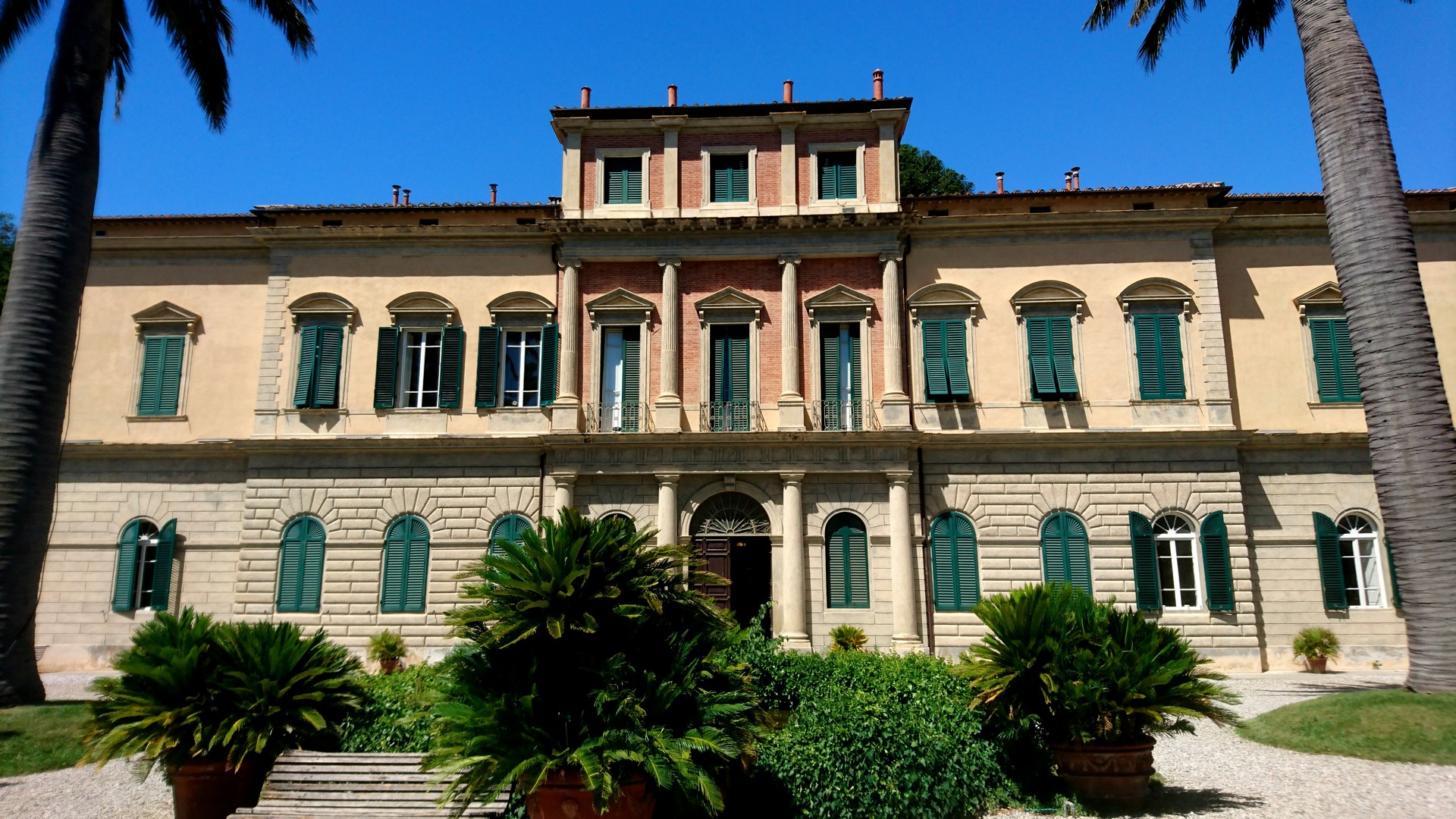
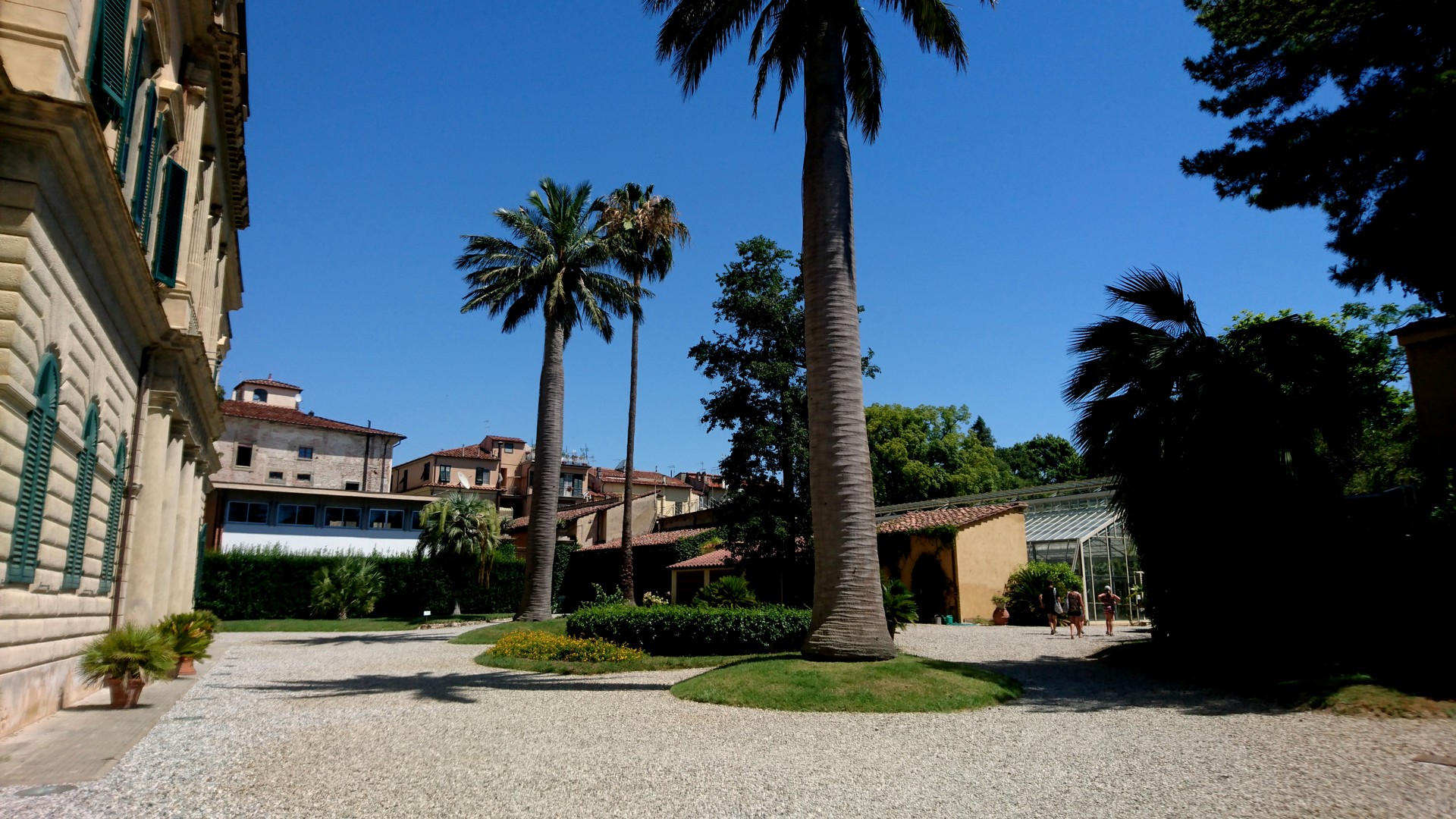
Orto Nuovo - New Garden
Acquired in 1841, this sector was laid out according to the principles of landscape gardening, with tall trees, wide avenues, and large, irregular grassy areas.
Several stone steps that lead up to the higher part of the lawn recall the original presence of a gazebo. The "New Garden" has undergone little modification, and is still reserved for tree species, including several notable specimens planted in 1872.
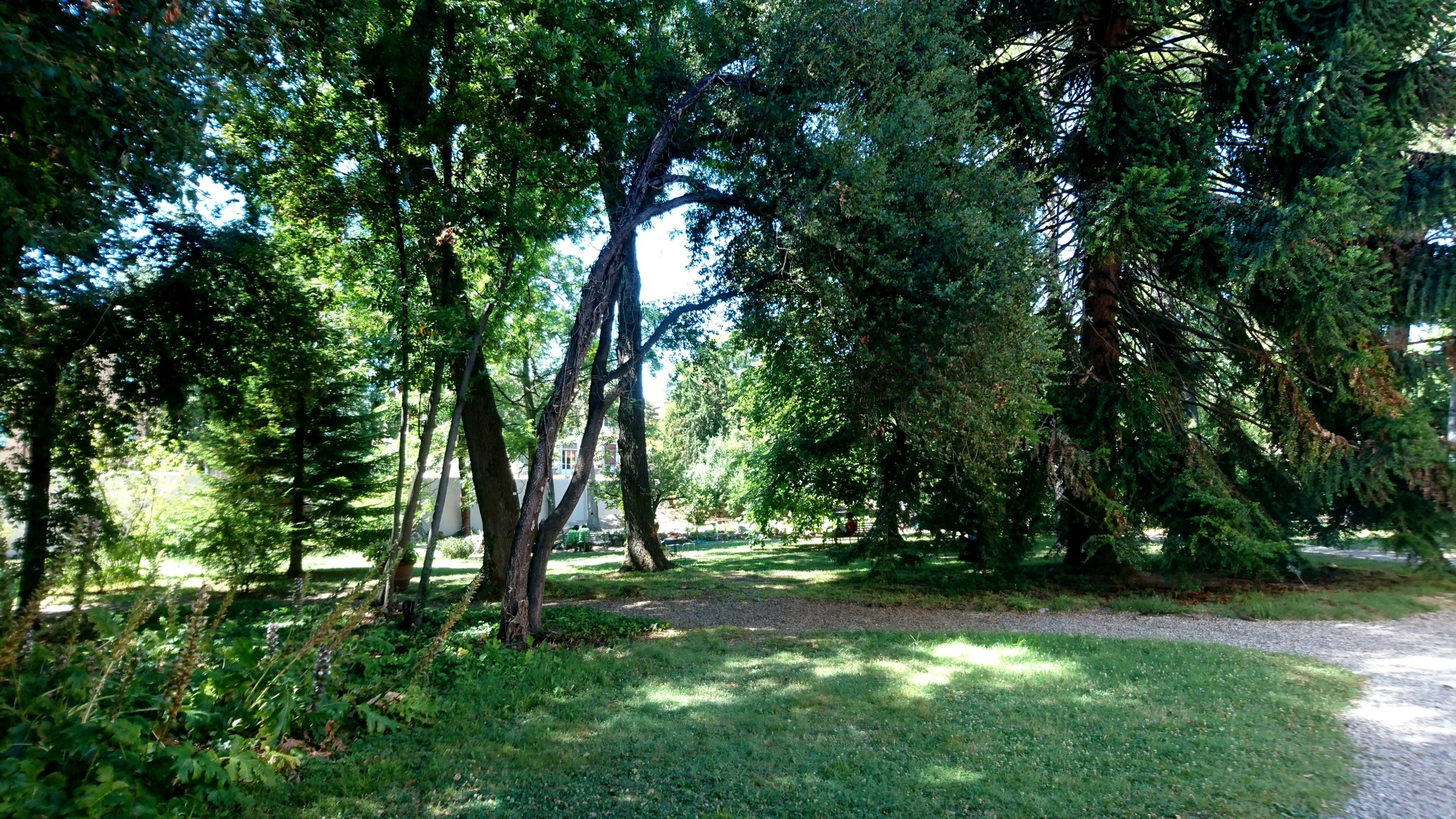
Examples:
Celtis australis L.
Its trunk is somewhat slender and very branched with a rounded and thick canopy. The roots of this tree are capable of penetrating rocky crevasses.
Distribution: it is a Mediterranean species, typical of Southern Europe but reaching also as far as certain parts of the Middle East.
Uses: the wood is elastic and resilient. It was very much used in the past to make whips, wheels, wheel hubs, pool cues and other implements. The leaves are used as forage for stock feeding while the bark is often used as stain for coloring cotton and wool fabrics. The seeds can be bored and strung into necklaces or rosaries.
Height: 27 m
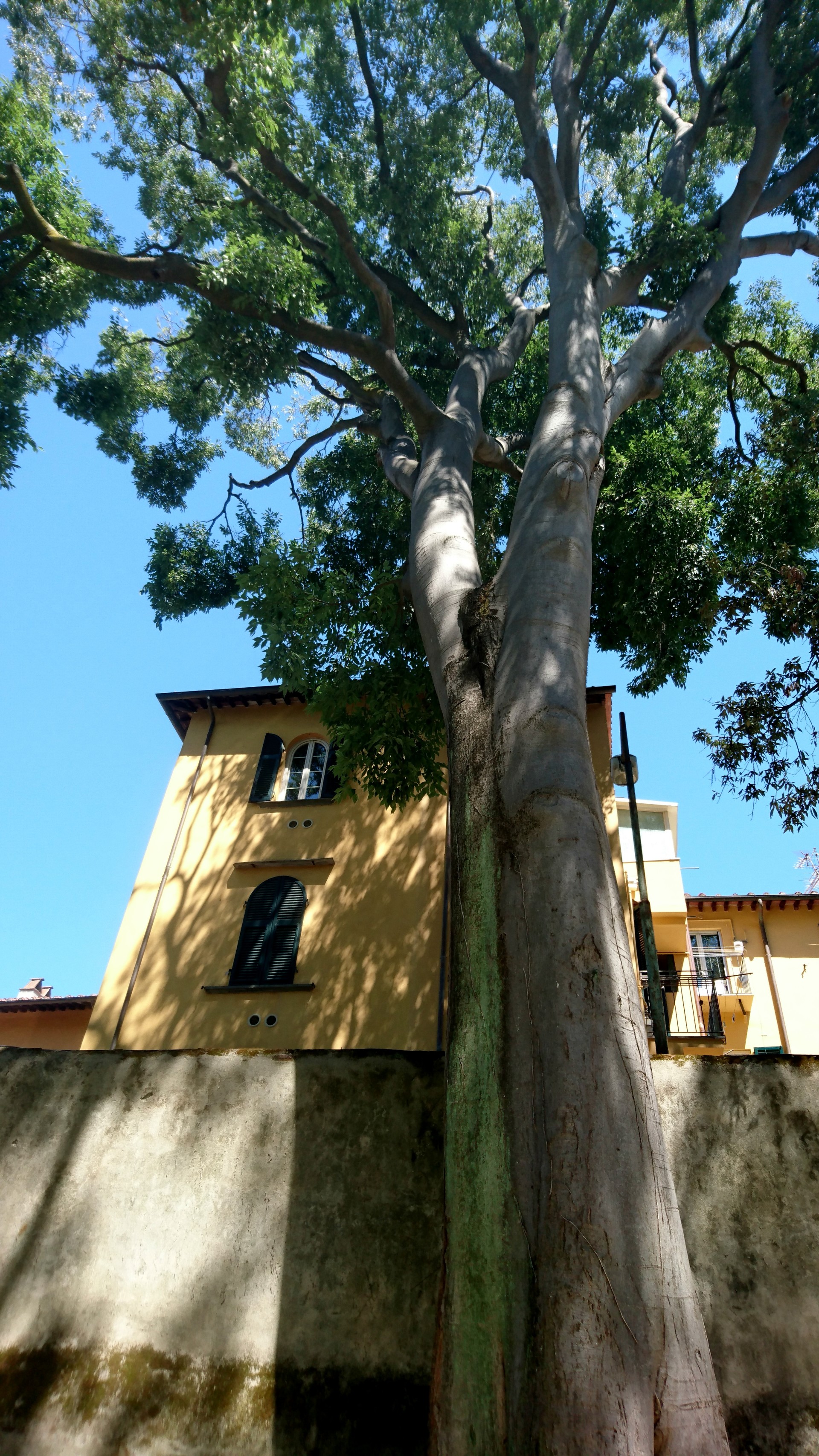
Cinnamomum camphora
The Camphor Tree is evergreen with an oval to a spherical canopy. Its bark is brownish-black and rather thick with deep fissures. Torn leaves release a pungent smell of camphor.
Distribution: it is found wild in China and Japan.
Uses: the essence of camphor is used as an antiseptic in the cure of chest complaints and to prepare deodorants and insecticides; it is extracted from its wood and leaves.
Height: 25 m
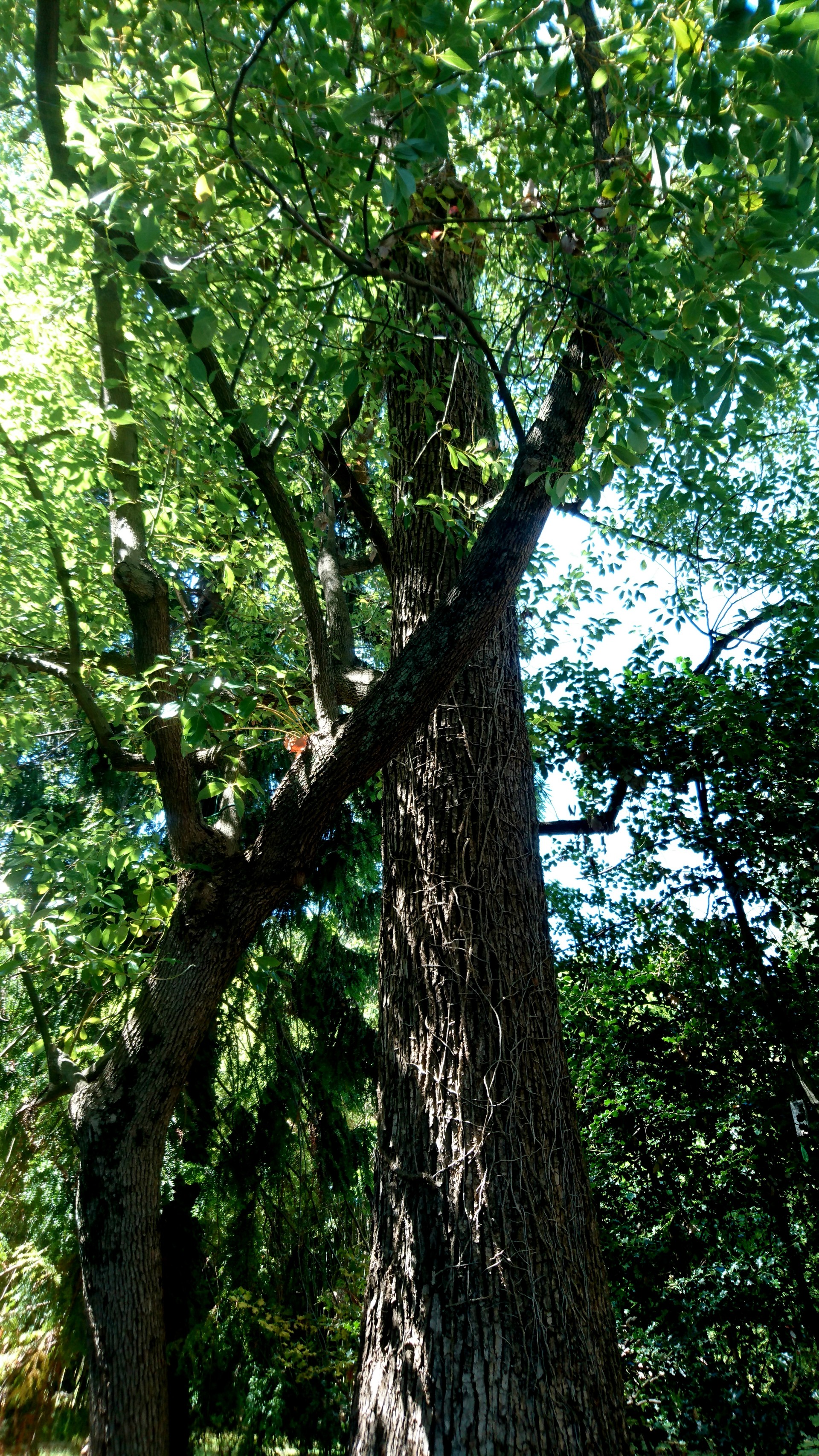
Taxus baccata
Slow-growing, long-lived conifer. Seeds are not born in cones but surrounded by red pulp (aril).
Uses: all parts of the plant, except the aril, contain taxine, a poisonous bitter substance. According to a legend, people stopping to rest in its shadow, die.
The wood of the Yew is very strong and elastic; in the past, it was used to make bows.
Orto del Mirto
The "Myrtle Garden" takes its name from an ancient myrtle tree planted in 1815.
Reflecting the origins of the Garden of Simples, this sector contains species used for therapeutic purposes in popular medicine, many of which are also reorganized by the Official Italian Pharmacopoeia.
The flowerbeds host about 120 plants arranged according to use and to the active principles they contain.
Magnolia grandiflora
Evergreen tree! - with an ample conical canopy. The flowers, which appear in early summer, are large, cup-shaped and white in color.
Distribution: The Southern Magnolia grows wild in the southeastern United Stated. It was introduced into cultivation in Europe in the first half of the XVIII century.
Height: 14 m
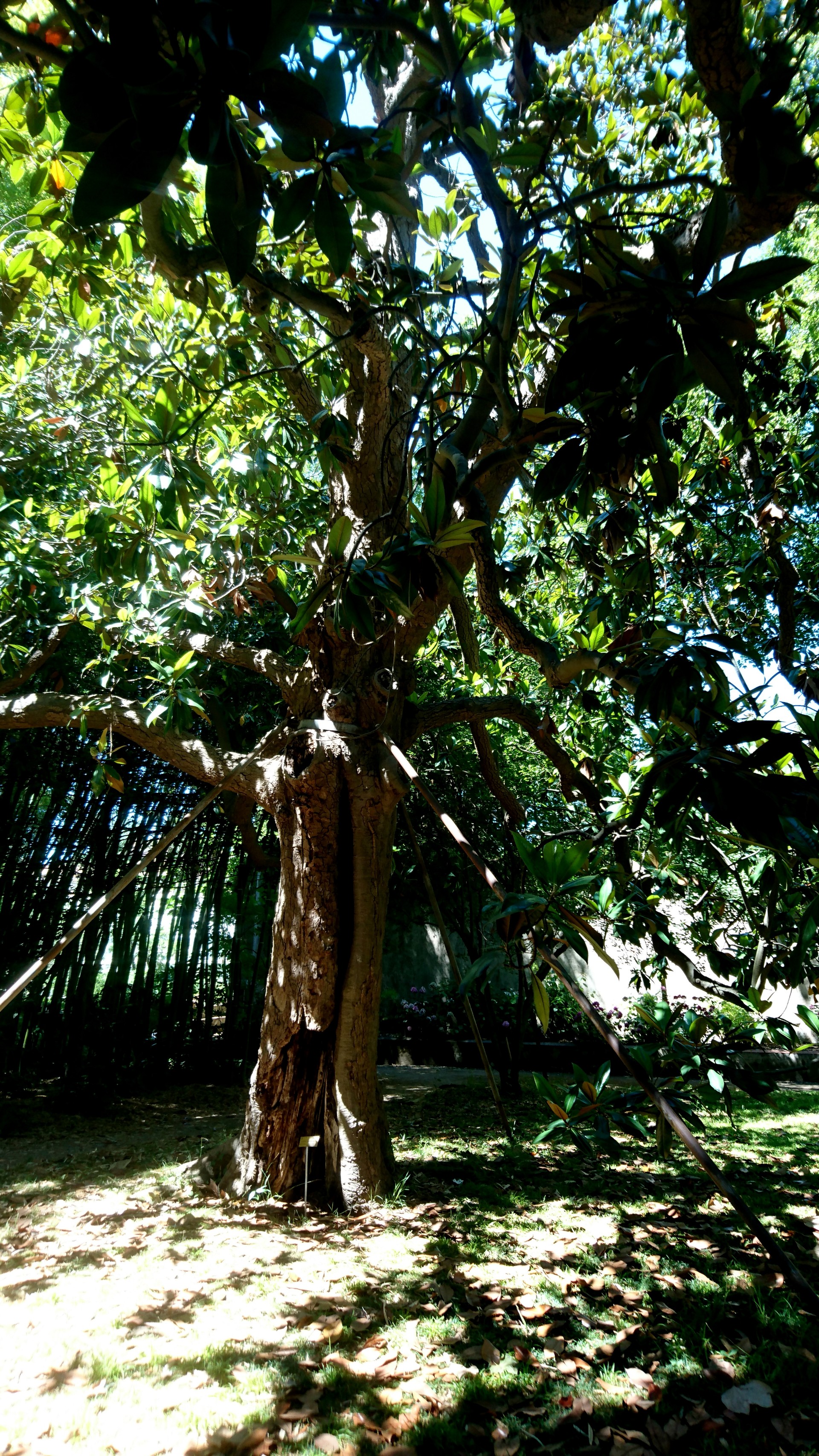
Scuola Botanica
The "Botanical School" is now used for the display of the systematic collection, which includes 400 species arranged in 48 flowerbeds, chosen to illustrate the morphological features of the most important plant families. Other flowerbeds host collection of wild food plants from around Tuscany, a collection of bulbous plants, and a collection of around 150 species of the Salvia genus from all over the world.
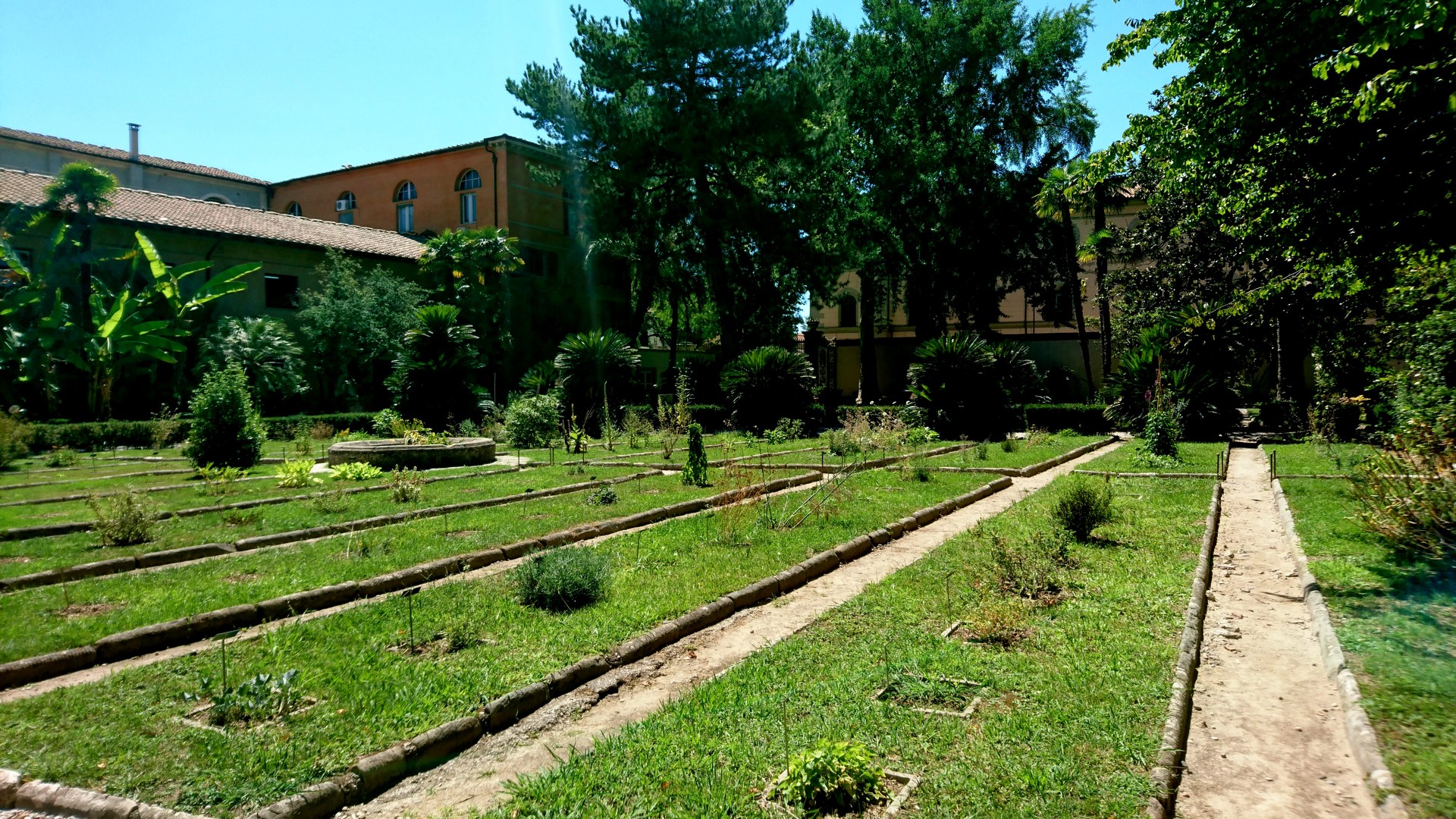
Tilia platyphyllos
It is deciduous and has a dome-shaped canopy. The flowers are small, yellowish in color and very scented.
Distribution: it grows wild in Europe and in the Caucasus.
Uses: its wood is whitish, soft and easy work with. It is used in the furniture industry and to make ornamental carvings. Its flowers produce an aromatic nectar imparting a characteristic flavor to honey.
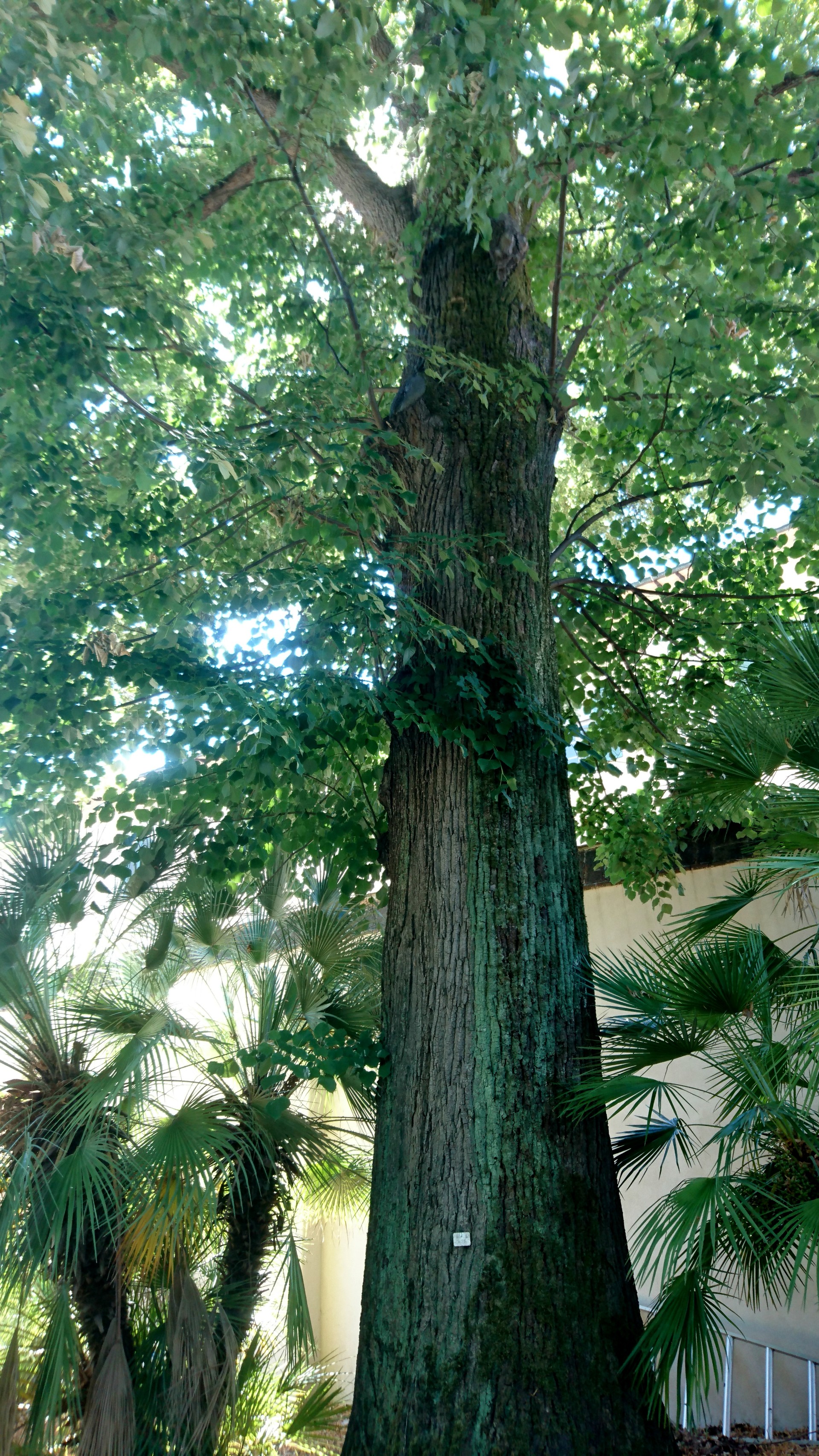
Tropical greenhouse
The greenhouse is hosting shrubs and trees coming from the tropical areas of Africa, Americas, Asia, and Oceania. They are disposed according to a geographical criterion.
To reconstruct the particular climatic conditions, the temperature inside the greenhouse must never fall below 16 degrees and the relative humidity is maintained at around 60-70%.
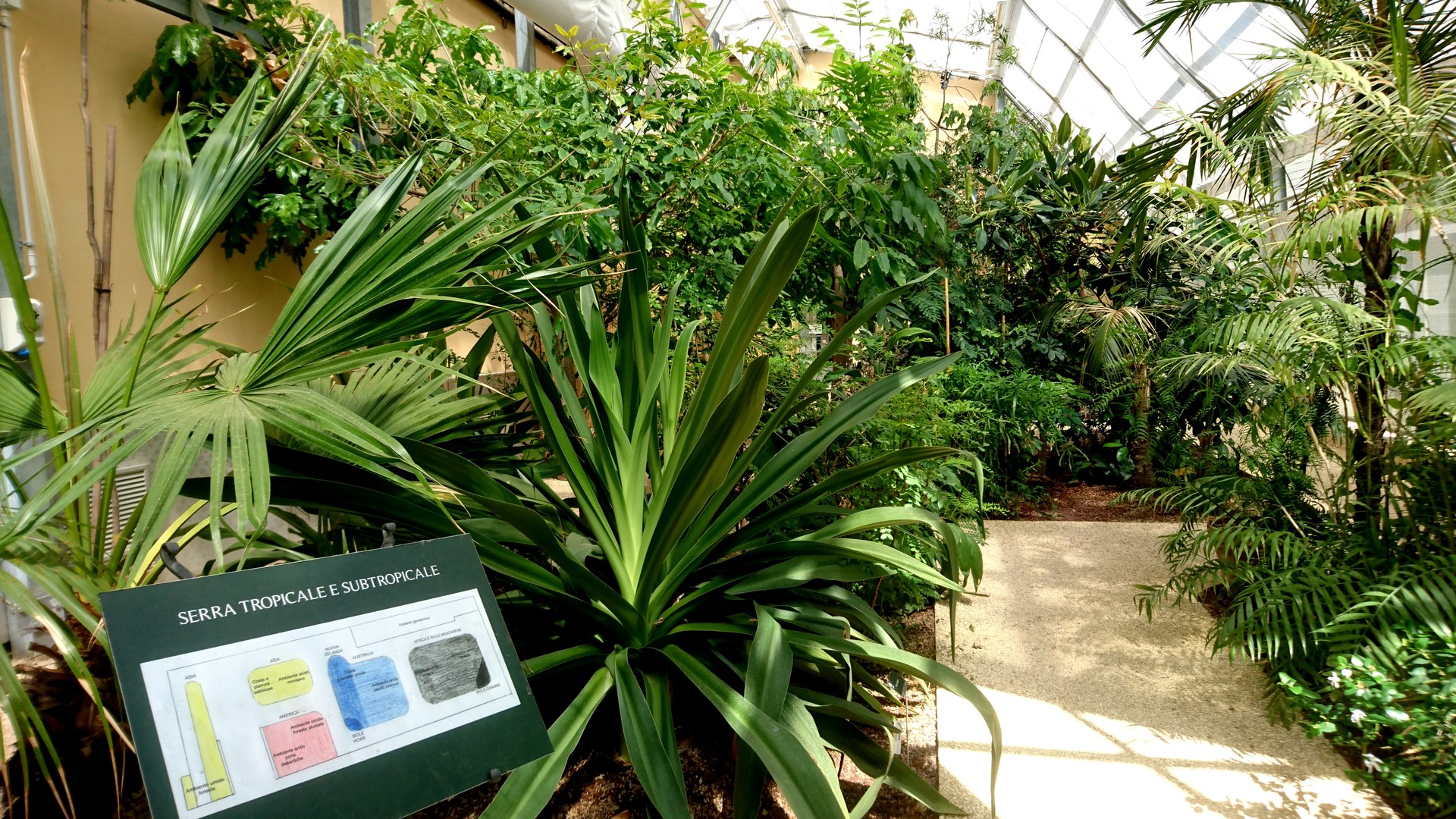
Greenhouse of the banana tree
This structure, typically arch shaped, is one of the first examples in Italy of a greenhouse, built in masonry and structural iron, used for the cultivation of plants needing a warm climate.
In this greenhouse, humidity and temperature are kept high all throughout the year. It hosts tropical plants widely used as food, such as coffee, pepper, papaya, and sugarcane.
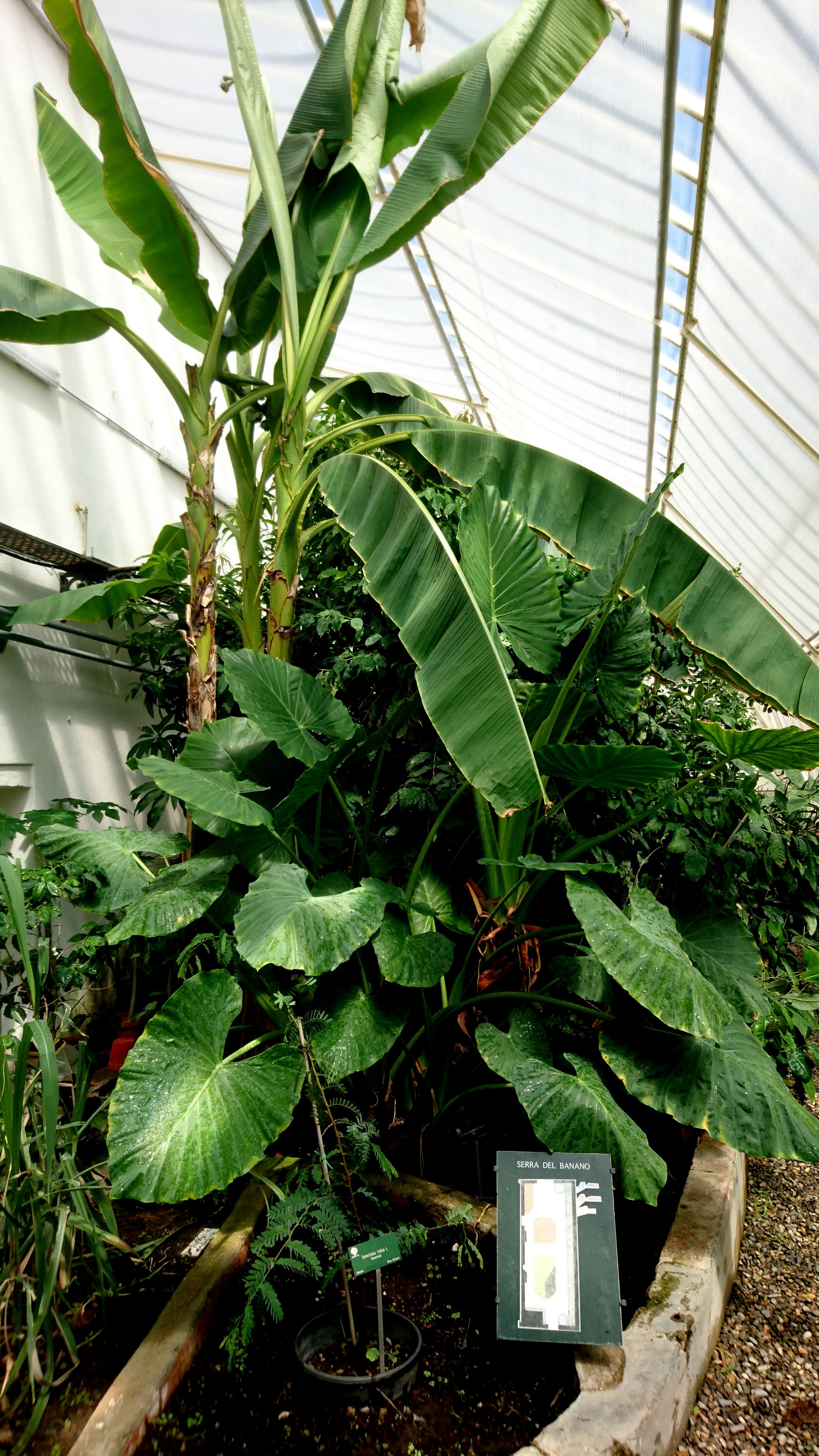
Greenhouse of Victoria
The greenhouse is hosting tropical aquatic plants, disposed according to a geographic criterion.
During the summer, the Water Lily of Santa Cruz can be found, coming from the big rivers of South America. Its large circular leaves with prominent upturned margins completely fill the largest tank; they can reach even two meters in diameter. The whitish-rose flowers are over 30 cm in diameter.
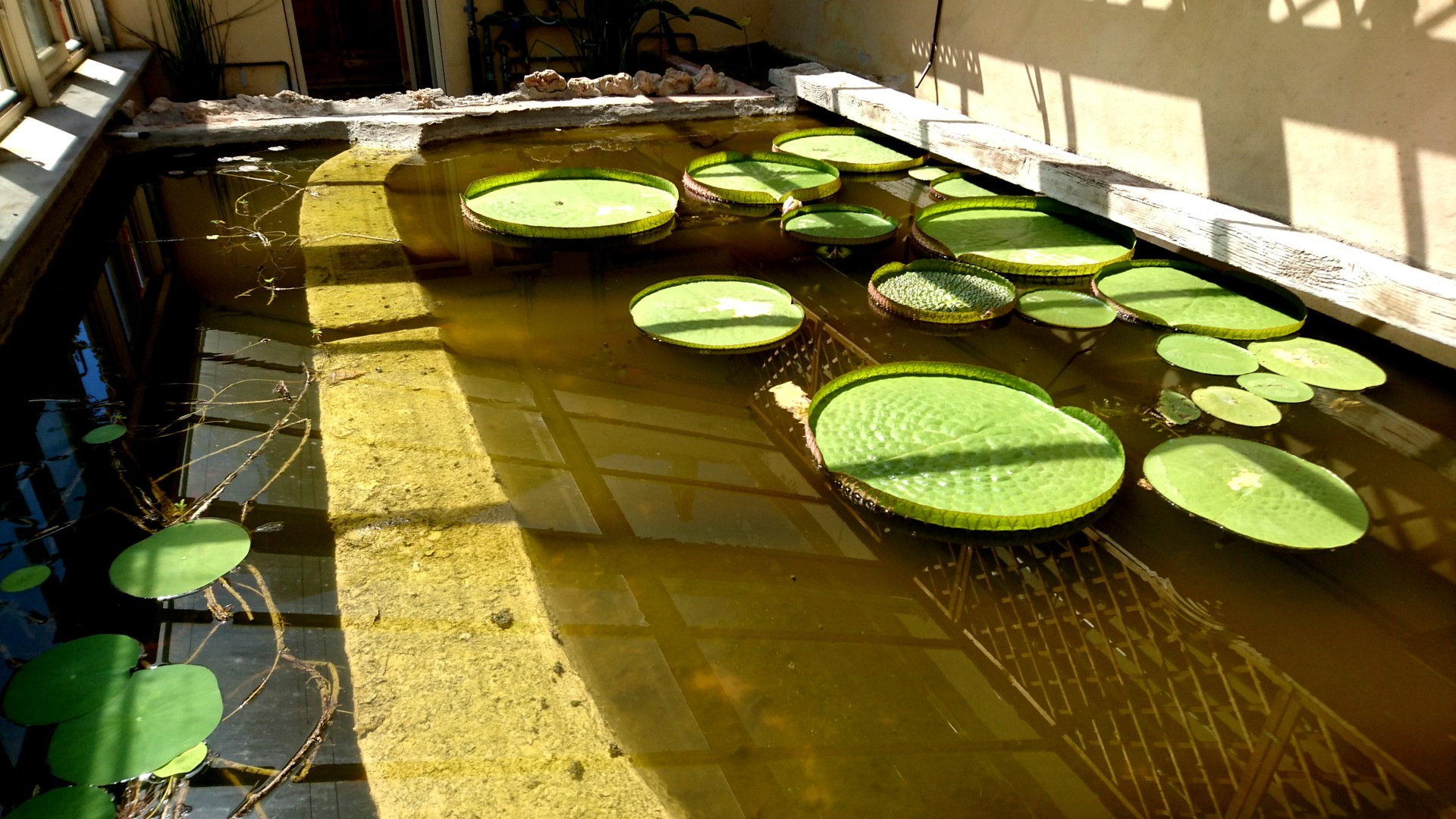
And... the cactus greenhouse, finally open for public!
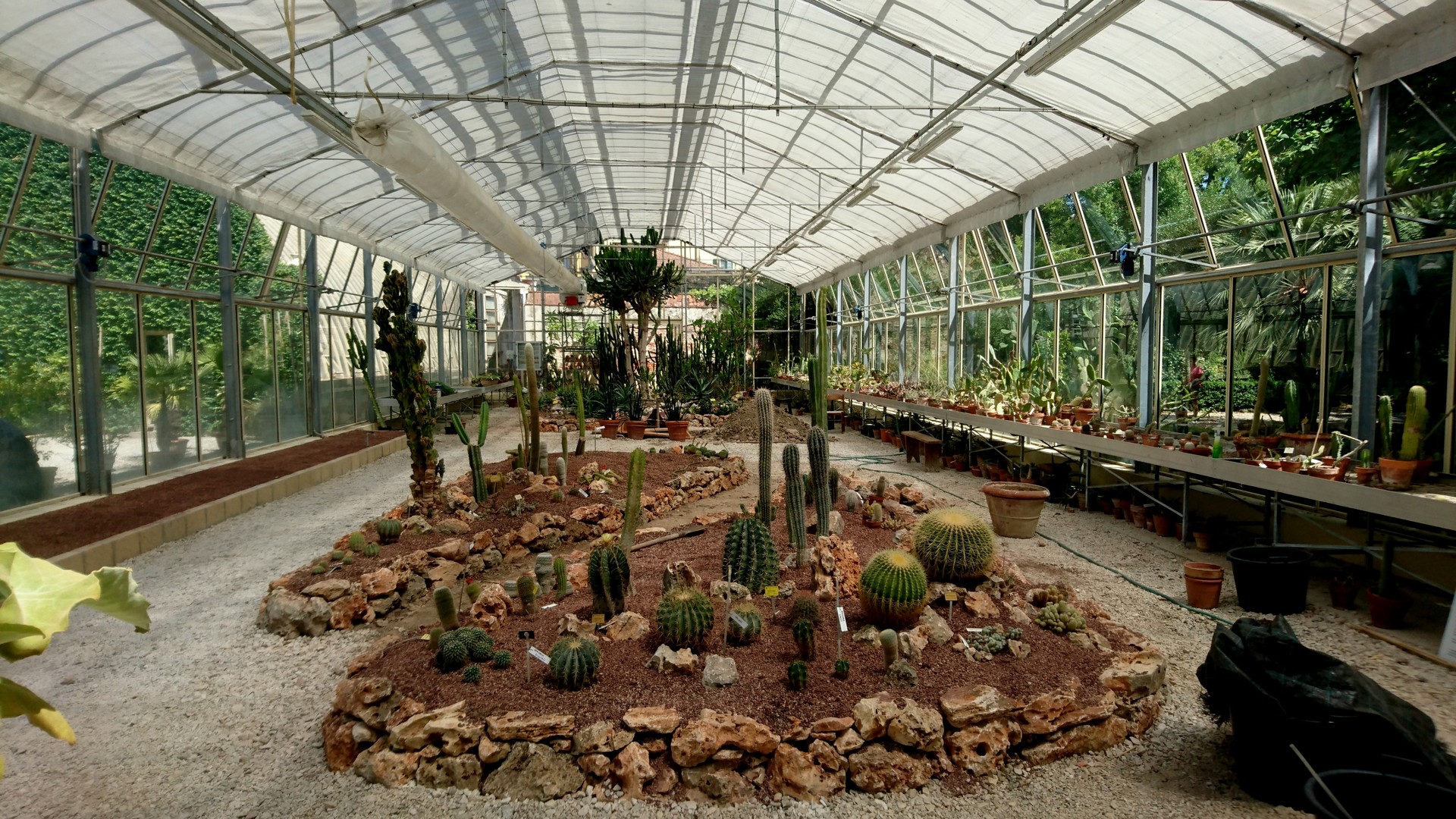
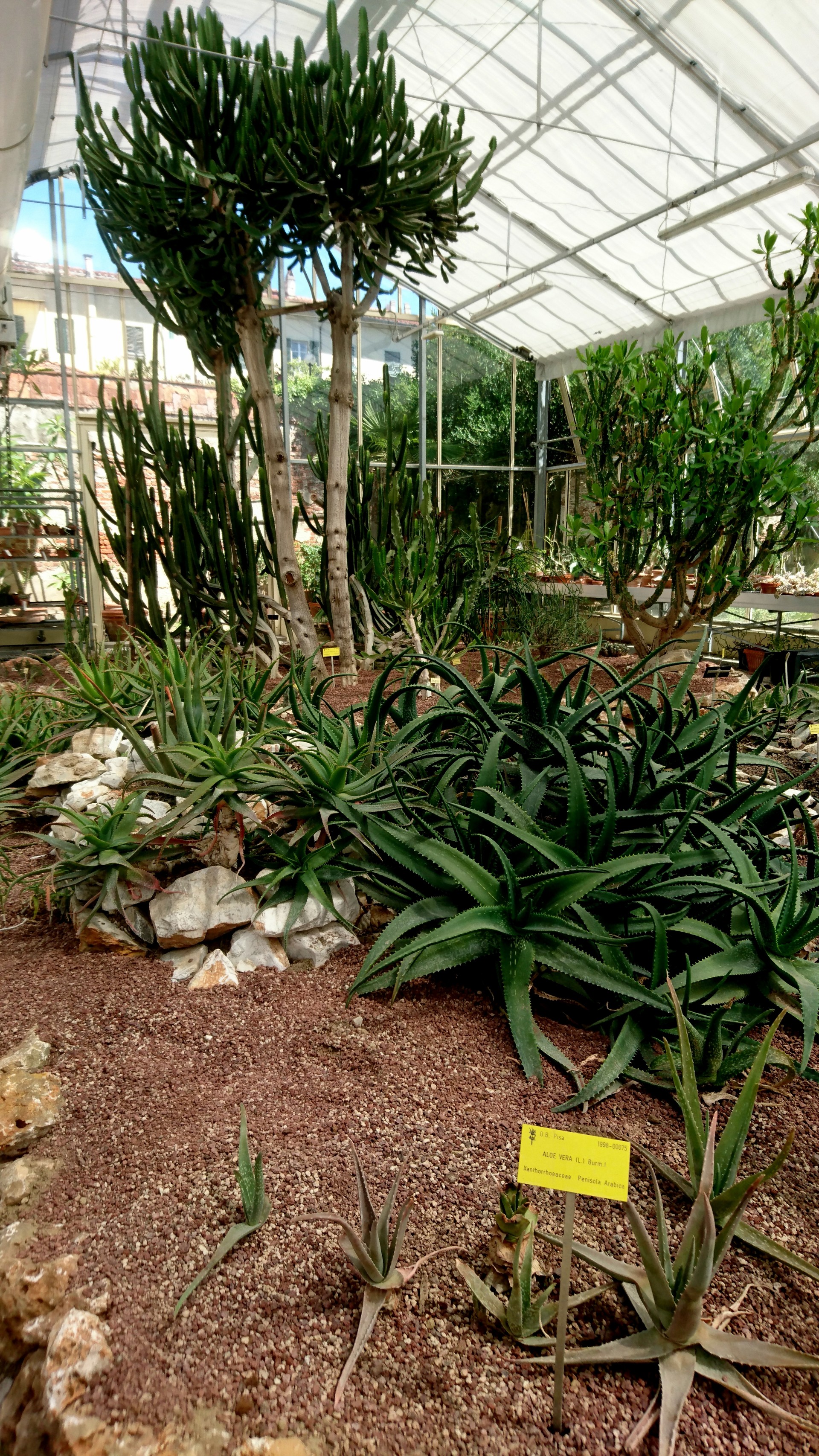
Botanical Museum
Inside the garden
The two engravings which depict the prospectus and the map of the ancient Carden of Simples, in the Catalogus Plantarum Horti Pisani of 1723, render a precise idea of its original structure.
The monumental portal in via Santa Maria led to the flower beds by means of a long hallway.
Here, as recorded in numerous memories of travelers, it was possible to admire some "whale bones", or parts of cetacean skeletons, and a series of portraits of the "prefects" (directors) of the Garden professors and scholars from the University of Pisa and famous Italian and European botanists and naturalists.
The hallway ended in the building which housed the collections of the "Gallery", the library, the chemistry laboratory and the "prefect's" living quarters. The distinguishing feature here is the facade covered in "grotesque" decorations of minerals and relics, completed after 1737 as testified by the Lorena family coat of arms linked with that of the Medici.
Today this "house of shells" is home to the Botanical Museum of the University of Pisa.
La Galleria
At the end of the XVI century, in its final settings, the Garden of Simples housed a "Gallery", or rather an extraordinary collection of naturalistic relics and works of art.
The Gallery, originally created for an educational purpose and to document the journeys and research activities of the "prefects", was set out in traditional sectors typical of the late V century and VI century European Wunderkammern "room of wonders": natural curiosities, art, and rarities. The exhibits included dried crocodiles, fish, sponges, coral, roots, seeds, horns of ungulates and even a mummy. Next to these, rocks and minerals were stored in cabinets protected by netting, to allow "scholars to view them but not to take them away".
A series of VI century inventories lay testimony to the confirmation of the collection once housed in the "big room" on the first floor of the "shell house", of which only a few examples have survived, today conserved in the Natural History Museum in Calci. Among these, the most famous is the skull with the coral branch, a skillful fake destined to find extraordinary fortune in the modern imagination.
 "The small study of the Grand Duke" - XVI century
"The small study of the Grand Duke" - XVI century

La collezione dei ritratti - The collection of portraits
The earliest inventories of the Botanical Garden of Pisa record that a series of portraits of celebrated naturalists from both Italy and abroad lined the corridor leading to the garden.
Painted between the XVI and XVII centuries, they portray the Preffeti or directors of the garden, lettori dei semplici, and other eminent professors at the university in Pisa, and illustrious botanists, as well as celebrated apothecaries and collectors.
These works were not only intended to pay homage to some of the greatest botanists of the period, as is indicated by the plants, flowers and botanical texts that appear alongside them - the "attributes" so to speak of their studies and scientific interests. They also constitute some of the oldest and most prestigious holdings in the garden's collection of botanical paintings and drawings.
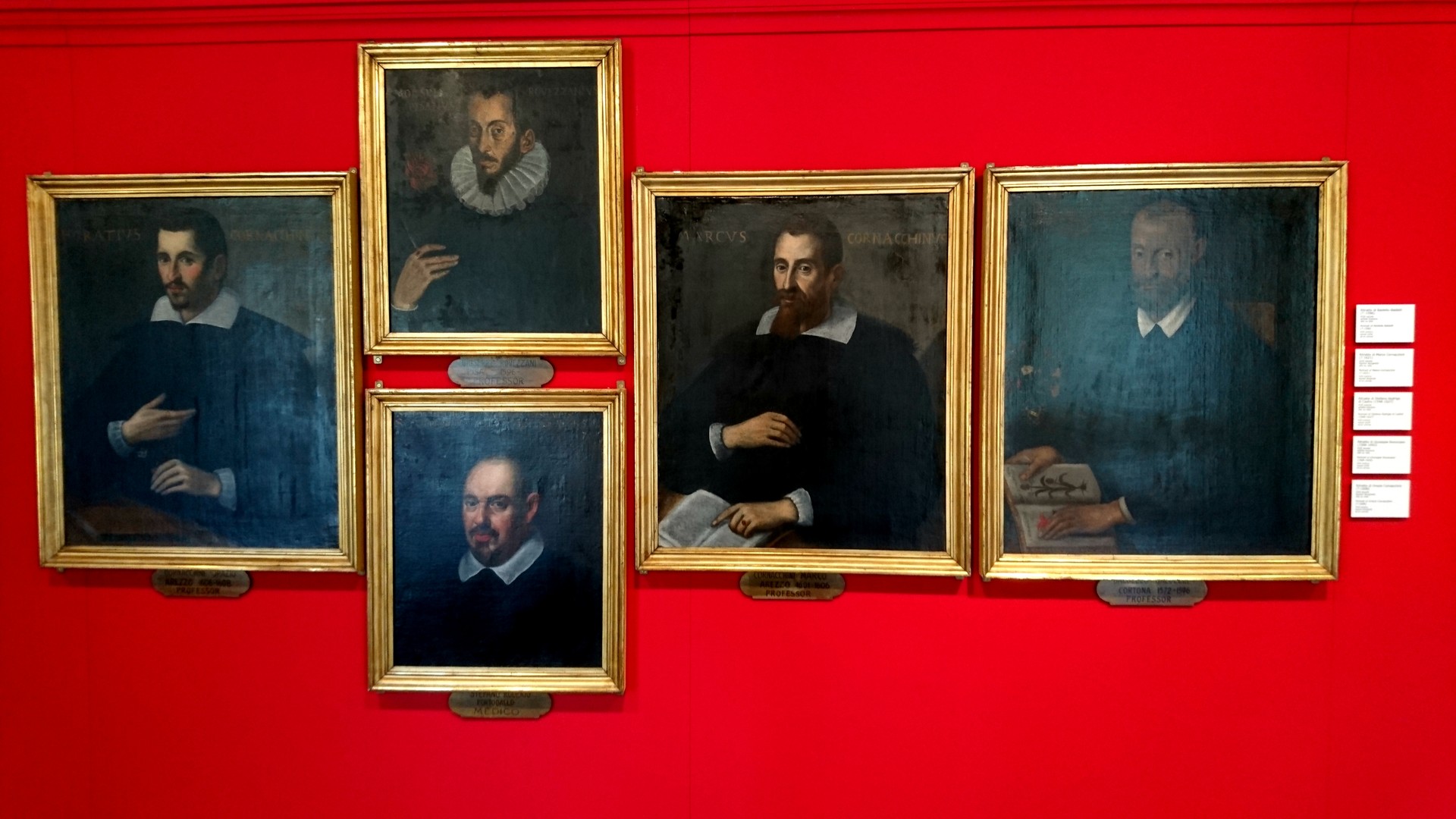
L'Orto Botanico e la scienza moderna - The Botanical Garden and the modern science
In 1839 Pisa and its university played host to the First National Conference of Italian Scientists, a decisive event in the history of modern science in Italy. During the conference, Luigi Calamai himself presented various exemplars of fruits and fungi modeled in wax "with the great realism and elegance".
Over time the Botanical Garden's collection of teaching materials has been continually expanded with the acquisition of more models and scientific drawings "for use during the lessons".

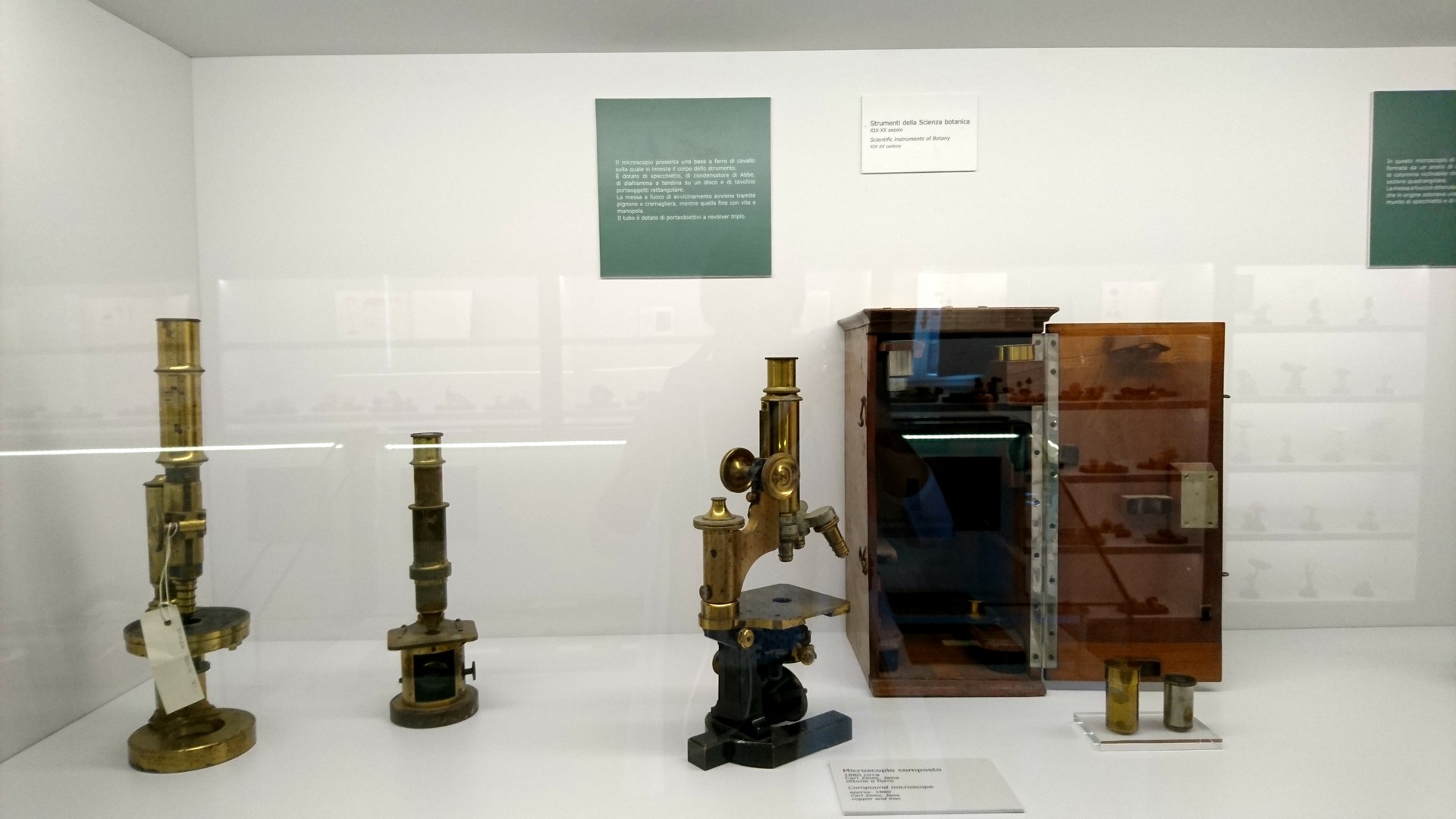
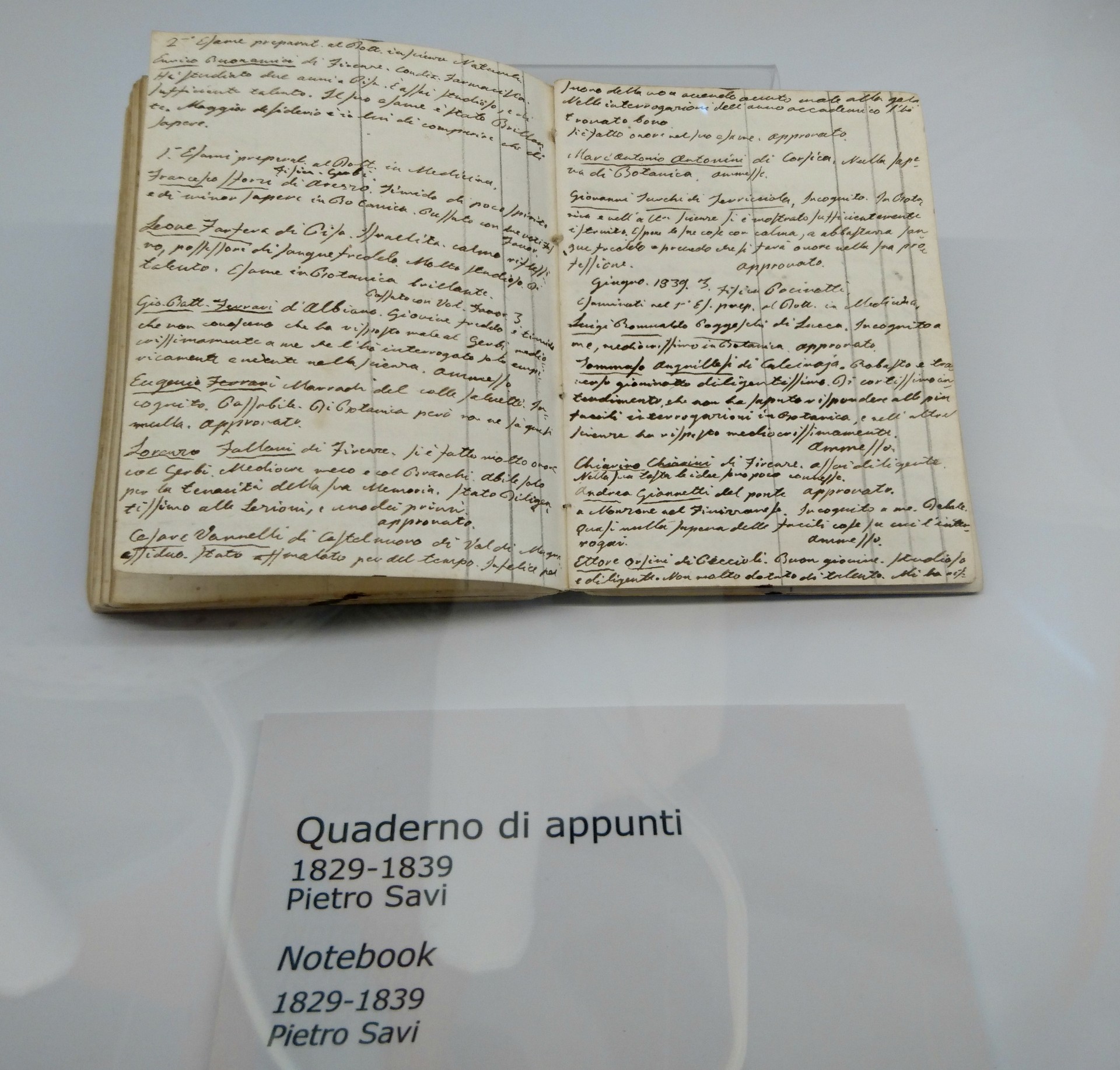

Photo gallery
Content available in other languages
- Español: Orto Botanico di Pisa
Want to have your own Erasmus blog?
If you are experiencing living abroad, you're an avid traveller or want to promote the city where you live... create your own blog and share your adventures!
I want to create my Erasmus blog! →





































Comments (1 comments)
✌️